Though few dare talk to their doctor about it, many patients resort to alternative medicine to relieve the ills of osteoarthritis, especially pain. (The term alternative medicine is used with caution because some medicines called "alternative" provoke really adverse side effects)
The various alternative medicines used for osteoarthritis include homeopathy, herbal medicine, oligotherapy, acupuncture, mesotherapy, osteopathy and chiropractic.
A survey conducted in 2001 (Canadian Community Health Survey (CCHS) conducted by Statistics Canada in 2000-2001) showed that the types of medicine most commonly used were as follows: (survey of 10,000 people over 60 years of age)
- mesotherapy 15%
- acupuncture 6%
- herbal medicine 5%
- homeopathy 5%
However, it should be noted that most of these people were pursuing a conventional medical treatment. These were alternative therapies in addition to the conventional treatment.
Osteoarthritis and homeopathy
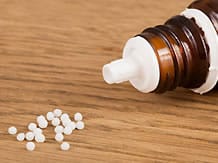
Homeopathy is based on the principle of similarity: a toxic substance responsible for a disease is able to treat the same disease if used in infinitesimal (infinitely small) doses. A treatment for the same disease can vary from one individual to another depending on their lifestyle and environment.
Today, many different drugs are prescribed by homeopaths to relieve osteoarthritis, according to the profile of the patient. However, the analgesic effects of homeopathy in the treatment of osteoarthritis are not scientifically proven. In addition, these remedies do not replace conventional medication.
What is herbal medicine?
Herbal medicine or phytotherapy is a medicine that uses plants with therapeutic properties (or more precisely the "active part" of these plants, the richest part in active ingredients). Once the plants are picked, extraction is carried out by different methods. The extracts can then be administered in capsules, teas, extracts, etc.
What are the differences between homeopathy and herbal medicine?
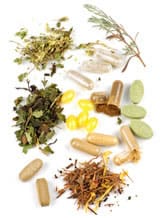
Herbal medicine uses plant extracts obtained using the same preparation techniques as those used to obtain the compounds providing the basis for homeopathic dilutions. The difference is the origin of the extracts used in homeopathy which are of plant origin but also animal and mineral.
As with homeopathy, these remedies claim having properties that relieve osteoarthritic pain, but their effectiveness is not scientifically proven, and these remedies do not replace conventional medication.
Acupuncture: what can you expect?
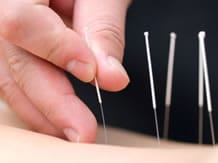
Acupuncture, a therapeutic method that is part of Chinese medicine, came into existence several centuries before Christ. The technique of acupuncture is based on placing metal needles on specific points of the human body along the meridians, to relieve painful spots or disease.
The analgesic and relaxing effect relieves some patients with osteoarthritis. However, no scientific evidence has been provided to demonstrate the effectiveness of acupuncture in relieving osteoarthritic pain. The main complication is local irritation if your skin is fragile.
What is mesotherapy and what can one expect from it?
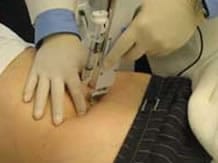
Mesotherapy is a technique for local treatment. It allows injecting into the dermis (subcutaneously) small doses of drugs (analgesics, anti-inflammatory drugs, etc.) using a system consisting of several very short needles (4 mm). This alternative medicine is proposed for the symptomatic treatment of osteoarthritis. However, the effectiveness of mesotherapy has not been scientifically proven in the treatment of osteoarthritic pain.
If you are interested in this type of treatment, it is advisable to talk with your doctor first.
Certain allergic diatheses or very sensitive skin can lead to taking a lot of precautions before considering this type of treatment.
What is osteopathy?
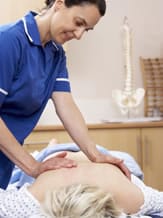
Osteopathy is a manual therapeutic method based on techniques of joint mobilisation as well as mobilisation of muscles and tendons. It is aimed primarily at osteoarthritis of the spine.
It includes several fields of application:
- Structural osteopathy: This section deals with joint blockages in the body which are called "osteopathic lesions or dysfunctions" by purely manual techniques: direct manipulation or mobilisations by muscle contractions
- Visceral osteopathy or functional osteopathy for internal organs or viscera (liver, stomach, intestines, lungs, etc.)
- Cranial osteopathy:A branch of osteopathy that deals specifically with the head, using specific functional techniques.
Osteopathy is completely separate from physiotherapy because their foundations, capabilities and goals are completely different. Osteopathy can only be exercised in a safe and competent way and only by osteopaths. The manipulations are usually painless and are never carried out without a thorough physical examination and viewing X-rays. It can relieve some osteoarthritic pain, however its effectiveness has not been scientifically proven.
What is chiropractic?
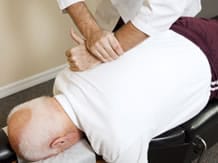
Osteopaths and chiropractors perform manipulations, but they use different techniques. Chiropractic arose from osteopathy.
The difference focuses mainly on the fact that chiropractic almost always seeks the cause of symptoms in the spine and acts by means of manipulations that are often more abrupt. Osteopathy also takes all the other body systems into account.
















